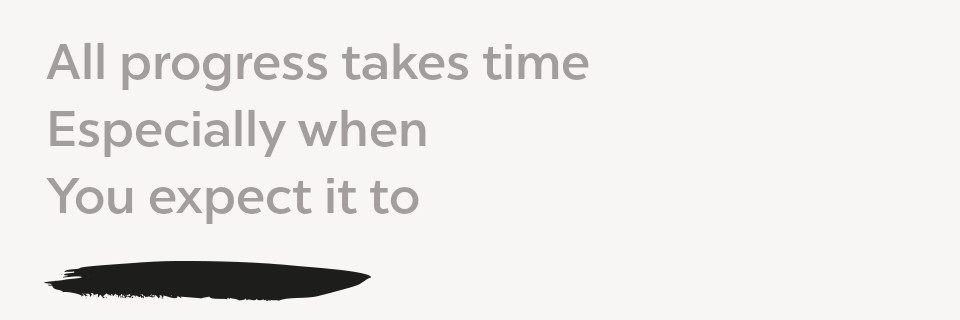“I’m working on the mustard on my chin. It used to be way worse.”
I helped a CEO (let’s call her Jane) of a financial services company identify her over-responsible tendencies and how she caused herself overwhelm. She was spread incredibly thin and wasn’t making time for what was most important. I discovered she had over 200 employees and did all of their performance reviews twice a year.
She cared a lot about her people and wanted to be “engaged.” That was the light side. The shadow side was unchecked control, mistrust of her managers, and the fear of missing out. It didn’t take long for her to realize she needed to stop, and that the company had grown to a size where she would have to follow the org chart to retain her sanity.
We went on to work on other things, and about a year later one of her managers told me that she’d rearranged the org chart so she had fifteen people reporting to her, and about two-thirds of the organization below.
Josef: “So what was behind that decision?”
Jane: “It was a mess. I needed to jump in there and sort it out.”
Josef: “Okay, do you think you can effectively manage fifteen people?”
Jane: “No, but this is temporary. It’s like an intervention.”
Josef: “How long has it been like this?”
Jane: “Six months.”
Josef: “And how much longer is it going to be?”
Jane: “I don’t know, until I get things sorted out.”
Josef: “Sounds more than temporary to me. What’s the impact of the most important people in your organization not getting proper manager attention for over six months?”
Jane: “Well, I’m actually working with them really closely.”
Josef: “I’m sure you are, but are you truly managing them? Are you talking with them about their goals and dreams? Are you mentoring them on a deep level? Or are you fire-fighting with them?”
Jane: [Sighing] Fire-fighting.
Josef: “You already know that the single most important factor in engagement is mentoring, and you made a structural change to make sure that couldn’t happen. And then your people are less engaged, so you feel like you have to get more involved, and the cycle continues. What’s really going on here?”
Jane: “It’s the fear of missing out again, I think.”
Josef: “Good call, it sure sounds like it.”
Jane: “But I’ve been working on it!”
Josef: “I’m sure you have, but the results tell a different story.”
Jane: “It used to be so much worse. I stop myself all the time from getting too involved.”
Josef: “That might be true, and I applaud the effort, but it’s not happening where it counts the most. That’s where we need to get curious. Let’s look at exactly what happened before you made the org chart change, so you can learn about how the fear works. Then we’ll talk about the org chart.”
The Work in Progress deflection is easily recognized in common statements like:
- “It could be worse.”
- “It is getting better.”
- “It’s a work in progress.”
The deflection works by acknowledging the issue, but implying that no additional attention is needed on it—in situations where attention is very much needed. More subtly and contextually, however, it can show up as a lax orientation toward change.
People who are new to deep change-work often struggle to make the transition from understanding new ideas to actually applying them. Our education system, with its emphasis on information retention, is partly to blame for this. People think that if they just have the ideas in the back of their mind, things will change, and sometimes this is the case.
But more often, what’s required is the uncomfortable application of those ideas that push us out of our comfort zone. This often entails doing the exact opposite of what our default mode would dictate, and it isn’t usually easy, because no one ever showed us how.
In the example above, the fact that Jane made the org chart change is evidence that her learning about over-responsibility had remained in the education phase, falling short of application.
You might argue that that’s a judgment call, and you’d be right. But when called on the behavior, an individual truly committed to application would say, “Oh crap, I did it again. I don’t believe it. Help me fix this and learn from the mistake.” Instead, Jane tried to deflect attention from the incident with assurances about how much the pattern has changed in other, far less important ways.
This is a good example of where listening to what the person doesn’t say is just as important as what they do say. Also, a client truly working on this issue would have the awareness to run the org chart change by their coach, as they would with any other significant event. It was conspicuously omitted, because Jane unconsciously knew the change would be challenged. It was a lie by omission.
When you encounter the Work in Progress, you encounter a cry for help. The person knows they’re “supposed” to be changing, but their good intentions aren’t working. What’s called for is a closer examination of how the dynamic operates, revisiting the negative impact it has, a recommitment to dealing with it, and a plan to follow into the future. Of course, change takes time, but if you don’t see incremental progress (or worse, you see a significant slide-back) in yourself or someone you’re mentoring, it’s important to take action.
If you need help seeing where you aren’t making the progress you desire, the Dojo is a great place to start! You can join a network of leaders and business owners who are helping each other along a shared journey of personal development and discovery. Join now to receive a FREE 30-day trial, at no risk to you. So what’s holding you back?


